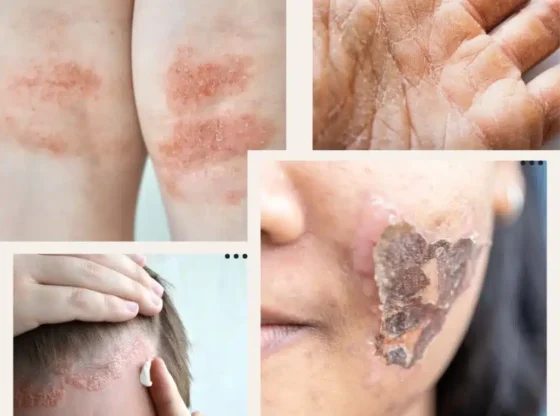Vlineperol is a topical corticosteroid commonly prescribed for the treatment of various skin conditions. Corticosteroids are synthetic drugs that mimic the effects of hormones produced by the adrenal glands, specifically cortisol. These medications are widely used in dermatology for their potent anti-inflammatory, immunosuppressive, and antiproliferative properties.
Mechanism of Action
Vlineperol, like other corticosteroids, exerts its effects by binding to glucocorticoid receptors in the skin. This binding triggers a series of intracellular events that result in the inhibition of inflammatory mediators such as prostaglandins and leukotrienes. Additionally, Vlineperol suppresses the migration of inflammatory cells to the affected area, reduces capillary permeability, and inhibits the release of histamine. These combined actions lead to a reduction in redness, swelling, and itching associated with various skin conditions.
Indications
Vlineperol is indicated for a variety of dermatological conditions, including:
- Eczema (Atopic Dermatitis): A chronic condition characterized by dry, itchy, and inflamed skin. Vlineperol helps manage flare-ups by reducing inflammation and itchiness.
- Psoriasis: A condition marked by rapid skin cell turnover leading to thick, scaly patches. The anti-inflammatory properties of Vlineperol help slow down skin cell production and reduce plaque formation.
- Contact Dermatitis: An allergic reaction resulting in red, itchy, and swollen skin upon contact with irritants. Vlineperol alleviates these symptoms by controlling the local immune response.
- Seborrheic Dermatitis: A condition causing flaky, yellowish scales on oily areas of the skin, such as the scalp and face. Vlineperol reduces inflammation and scaling in affected areas.
- Lichen Planus: An inflammatory condition that results in purplish, itchy, flat-topped bumps on the skin. Vlineperol’s anti-inflammatory action helps in reducing these lesions.
Also Read: Ausschütter Unlocking the Potential of Regular Investment Distributions
Application and Dosage
The dosage and application frequency of Vlineperol depend on the severity of the condition and the patient’s response to treatment. It is typically applied once or twice daily to the affected areas. The following steps are recommended for optimal use:
- Clean the Area: Gently cleanse the affected skin with mild soap and water, and pat dry.
- Apply a Thin Layer: Squeeze a small amount of Vlineperol onto your fingertip and apply a thin layer to the affected area, rubbing in gently.
- Wash Hands: Wash your hands thoroughly after application to prevent accidental spreading to other areas of the body or mucous membranes.
- Avoid Occlusion: Unless directed by a healthcare provider, avoid covering the treated area with bandages or other occlusive dressings, as this can increase the absorption of the medication and risk side effects.
Side Effects
While Vlineperol is generally well-tolerated, it can cause side effects, especially with prolonged use. Common side effects include:
- Skin Thinning: Long-term use can lead to atrophy of the skin, making it more fragile and prone to injury.
- Striae (Stretch Marks): Extended application may cause stretch marks, particularly in areas where the skin folds.
- Telangiectasia: Visible small blood vessels may appear on the surface of the skin.
- Contact Dermatitis: Ironically, some patients may develop an allergic reaction to the corticosteroid itself, resulting in contact dermatitis.
- Systemic Absorption: In rare cases, especially when used over large surface areas or under occlusive dressings, Vlineperol can be absorbed into the bloodstream, potentially leading to systemic effects such as hypothalamic-pituitary-adrenal (HPA) axis suppression, Cushing’s syndrome, and hyperglycemia.
Precautions
Certain precautions should be taken to minimize the risk of side effects:
- Limit Duration of Use: Use Vlineperol for the shortest duration necessary to control symptoms.
- Monitor for Side Effects: Regularly check for signs of skin thinning, striae, or other adverse reactions, especially with long-term use.
- Avoid Sensitive Areas: Do not apply Vlineperol to the face, groin, or underarms unless specifically directed by a healthcare provider, as these areas are more prone to side effects.
- Use in Children: Children are more susceptible to the systemic absorption of topical corticosteroids. Therefore, use in pediatric patients should be closely monitored by a healthcare provider.
Conclusion
Vlineperol is a valuable medication in the management of various inflammatory skin conditions. Its effectiveness in reducing inflammation, itching, and redness makes it a mainstay in dermatological therapy. However, like all medications, it must be used judiciously to minimize potential side effects. Patients are advised to follow their healthcare provider’s instructions carefully and report any adverse reactions promptly. With appropriate use, Vlineperol can significantly improve the quality of life for individuals suffering from chronic skin conditions.
Also Read: Tamilrockers Proxy Bypassing Geo-Restrictions for Tamil Content
FAQs
1. What is Vlineperol used for?
Vlineperol is a topical corticosteroid used to treat various inflammatory skin conditions such as eczema, psoriasis, contact dermatitis, seborrheic dermatitis, and lichen planus.
2. How should I apply Vlineperol?
Apply a thin layer of Vlineperol to the affected area once or twice daily, as directed by your healthcare provider. Make sure to clean the area before application and wash your hands afterward.
3. Can Vlineperol be used on the face?
Vlineperol should not be applied to the face, groin, or underarms unless specifically directed by a healthcare provider, as these areas are more susceptible to side effects.
4. What are the common side effects of Vlineperol?
Common side effects include skin thinning, stretch marks, visible small blood vessels (telangiectasia), and possible allergic reactions (contact dermatitis). In rare cases, systemic absorption can occur, leading to more serious side effects.
5. How long can I use Vlineperol?
Use Vlineperol for the shortest duration necessary to control your symptoms. Long-term use increases the risk of side effects. Always follow your healthcare provider’s guidance on the duration of use.
6. Can children use Vlineperol?
Vlineperol can be used in children, but with caution. Children are more susceptible to systemic absorption of topical corticosteroids, so their use should be closely monitored by a healthcare provider.
7. What should I do if I experience side effects?
If you notice any side effects, such as skin thinning or new skin lesions, stop using Vlineperol and contact your healthcare provider immediately for further advice


